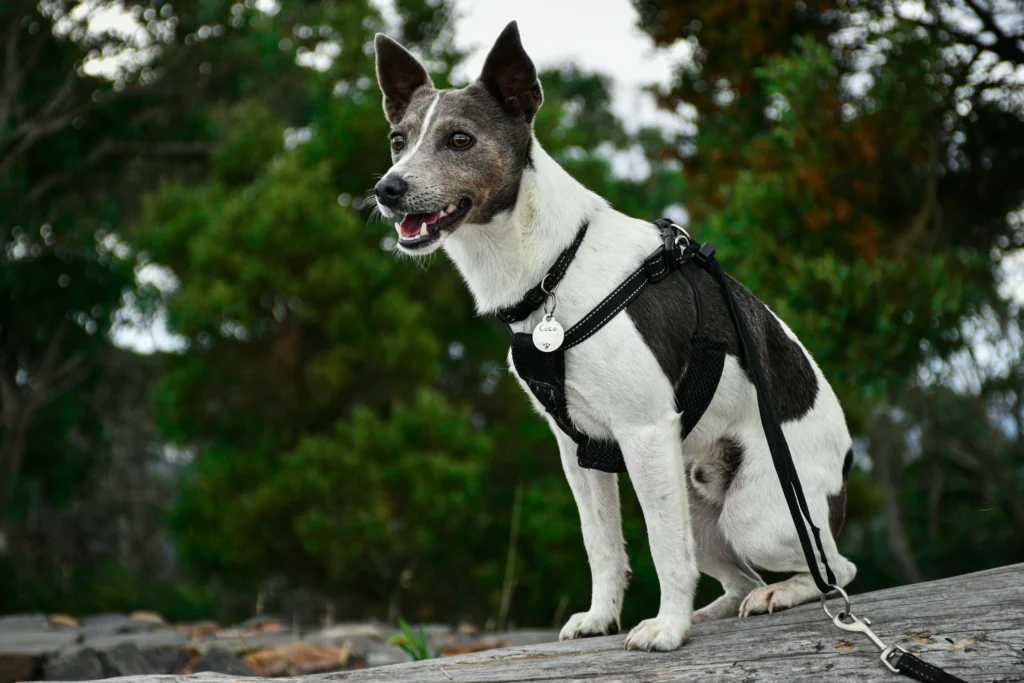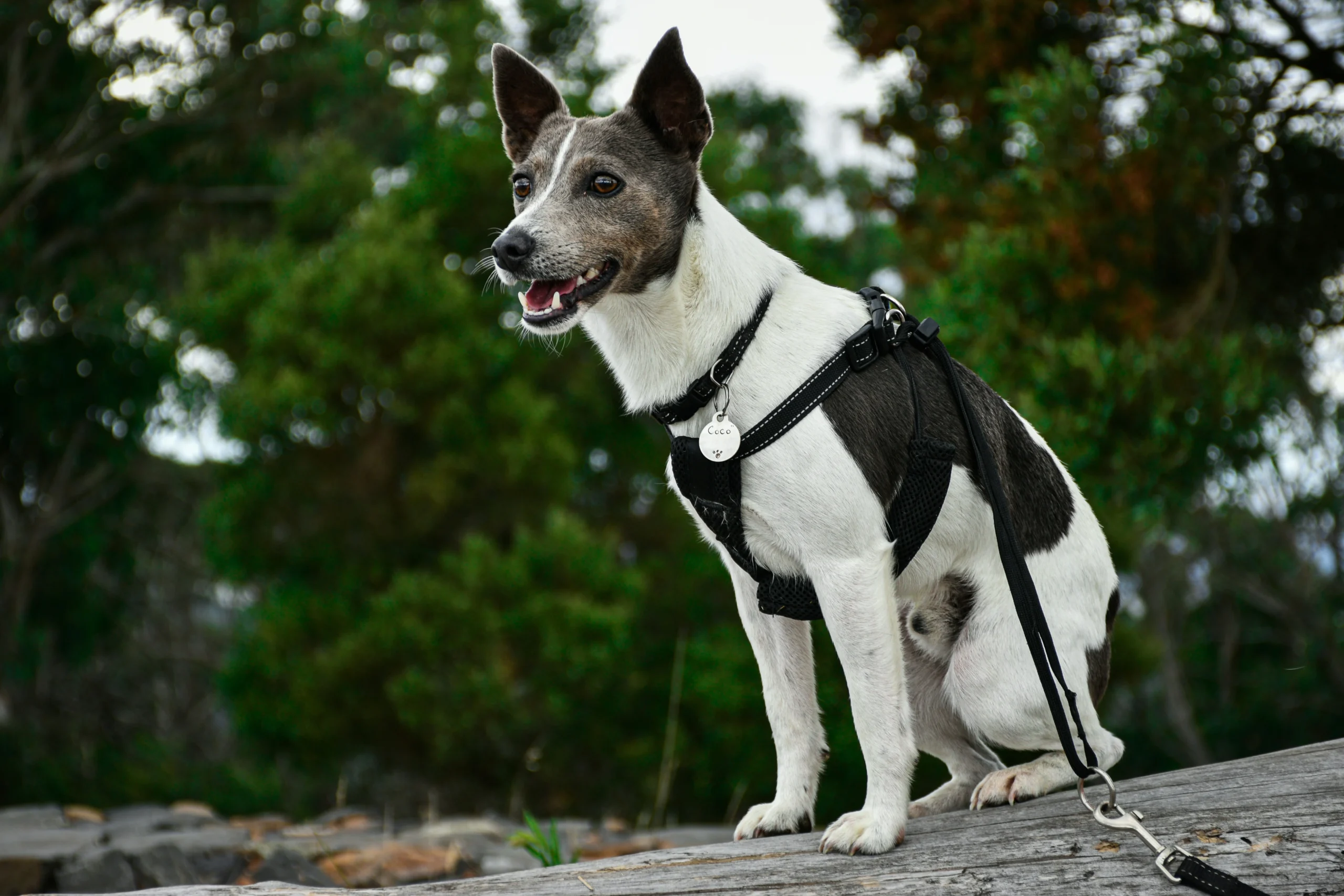Best Shock Collar for Dogs: Safe and Reliable Options for Training
Training a dog can be one of the most rewarding yet challenging experiences for pet owners. Whether you’re dealing with a stubborn pup who ignores recall commands, a small dog with big barking problems, or simply trying to establish reliable off-leash behavior, the journey often leads many frustrated owners to search for “best shock collar for dogs.”
Before we dive into reviews and recommendations, it’s important to acknowledge what you’re really looking for: effective, humane solutions to training challenges. This comprehensive guide aims to provide ethical guidance on training tools, including e-collars (commonly called shock collars), with a strong emphasis on professional consultation and humane practices.
In this article, we’ll explore alternatives to e-collars, understand when these tools might be appropriate, review the top models for different situations, and most importantly, outline how to use them responsibly—if you determine they’re necessary for your specific situation.
Table of Contents
Before You Consider an E-Collar: Are There Better Alternatives?
Positive Reinforcement Training
Positive reinforcement training has become the gold standard in modern dog training—and for good reason. This approach focuses on rewarding desired behaviors rather than punishing unwanted ones.
- How it works: When your dog performs a desired behavior, they receive something they value (treats, praise, play, etc.).
- Benefits: Builds trust, strengthens your bond, encourages your dog to think and problem-solve, and creates lasting behavioral changes without fear.
- Basic techniques:
- Marker training (using a word like “yes” or a clicker to precisely mark correct behavior)
- Capturing (rewarding naturally occurring behaviors you want to encourage)
- Shaping (rewarding small steps toward the final behavior)
Most professional trainers and veterinary behaviorists recommend exhausting positive reinforcement approaches before considering aversive tools like e-collars.
Other Training Tools
Several effective, less controversial tools can help address common training challenges:
- Clickers: Small devices that make a distinct sound to mark the exact moment your dog performs the correct behavior.
- Target sticks: Help guide your dog into positions or direct their movement without physical manipulation.
- Head halters (like the Gentle Leader): Provide control of your dog’s head, similar to a horse halter, making it easier to redirect attention.
- No-pull harnesses: Designed to discourage pulling by redirecting your dog’s momentum or creating mild discomfort when they pull.
- Long lines: Extended leashes (15-50 feet) that allow freedom while maintaining control during recall training.
When to Seek Professional Help
We strongly recommend consulting a certified professional before using any aversive training tool.
Professional guidance is invaluable, especially when dealing with challenging behaviors. Certified dog trainers or veterinary behaviorists can:
- Assess your dog’s specific needs and temperament
- Identify underlying causes of problematic behaviors
- Develop a customized training plan
- Demonstrate proper technique and timing
- Prevent unintended consequences of training methods
Look for credentials like CPDT-KA (Certified Professional Dog Trainer-Knowledge Assessed), KPA-CTP (Karen Pryor Academy Certified Training Partner), or CBCC-KA (Certified Behavior Consultant Canine-Knowledge Assessed).
Understanding E-Collars (Shock Collars, Remote Training Collars)

E-collars are training devices worn around a dog’s neck that deliver various stimuli (static stimulation, vibration, or tone) controlled remotely by the handler. Modern e-collars typically offer multiple types of feedback:
- Static stimulation: Low-level electrical stimulation (from barely perceptible to more intense levels)
- Vibration: Non-electrical tactile sensation
- Tone/beep: Auditory signal
Different types serve various purposes:
- Remote training collars: Handler-controlled for general obedience and behavior modification
- Anti-bark collars: Automatically activated when the dog barks
- Boundary training collars: Linked to invisible fence systems
The Controversy & Ethical Considerations
E-collars remain one of the most controversial tools in dog training, with strong opinions on both sides.
Potential risks if misused:
- Development of fear, anxiety, and aggression
- Breakdown of trust between dog and handler
- Physical discomfort or pain
- Suppression rather than resolution of behavioral issues
- Inappropriate associations (the dog may associate the stimulation with something other than their behavior)
Arguments for controlled use:
- May provide clear communication in critical situations
- Can be effective for off-leash reliability when properly introduced
- May be considered for specific behaviors when other methods have failed
- Modern versions offer precise control and very low stimulation options
Arguments against:
- Potential for misuse and abuse (even unintentionally)
- May cause psychological harm even without obvious signs
- Many behaviors can be addressed with positive methods
- Require perfect timing and understanding of learning theory
Our stance: E-collars are tools for specific situations, used with extreme caution, at the minimal necessary level, and ideally under professional guidance. They should never replace a foundation of positive training and clear communication.
Is an E-Collar Right for Your Dog & Situation? A Checklist
Before purchasing an e-collar, honestly answer these questions:
□ Have I exhausted positive reinforcement methods with proper implementation? □ Have I consulted with a professional trainer or behaviorist? □ Is the specific behavior I’m addressing appropriate for e-collar training? □ Is my dog’s temperament suitable for this training method? □ Am I committed to learning proper technique before using the device? □ Can I guarantee consistent, calm application without frustration or anger? □ Do I understand the potential risks involved?
Situations where e-collars might be considered (with professional guidance):
- Reliable off-leash recall in high-distraction environments
- Reinforcing known commands at a distance
- Stopping dangerous behaviors like chasing wildlife or cars
Situations where e-collars are NOT appropriate:
- Puppies under 6 months (still developing physically and mentally)
- Fearful, anxious, or timid dogs
- Aggression due to fear or anxiety
- Normal dog behaviors that are simply inconvenient
- As a quick fix or substitute for consistent training
- When the handler is inexperienced or prone to frustration
How to Choose the Best E-Collar (If You’ve Decided It’s Necessary) – The Buying Guide
Key Features to Look For
Types of E-Collars Reviewed
Our primary focus is on remote training collars that give you direct control over when and how stimulation is delivered. These are what most people are referring to when searching for the “best shock collar for dogs” or “best shock collar for stubborn dogs.”
We’ll also briefly mention specialized options like anti-bark collars and GPS/containment systems with training features, but our detailed reviews will center on versatile remote training options.
Top E-Collar Picks for 2025: Responsible Reviews
Dogtra 1900S
★★★★★ (4.8/5)
Best For: Medium to large stubborn dogs with professional guidance
Key Specs:
- Range: 3/4 mile
- Levels: 127 stimulation levels
- Modes: Nick, constant stimulation, vibration, and HPP (high-performance pager)
- Battery: 2-hour rapid charge; 50+ hours runtime
- Waterproof: Yes (IPX9K)
Detailed Review: The Dogtra 1900S represents the gold standard in remote training collars, particularly for handlers working with stubborn dogs who need precise control. What makes this model stand out is its truly incremental 127 levels of stimulation, allowing trainers to find the exact working level for each dog—often much lower than you might expect even for stubborn breeds.
The collar features Dogtra’s “nick” stimulation (momentary tap) and constant stimulation, but professional trainers particularly appreciate the non-static HPP vibration mode, which can be used as a precursor or alternative to static stimulation. This gradual approach aligns with responsible e-collar introduction.
The 3/4 mile range makes it suitable for field training, while the ergonomic transmitter design allows for subtle, one-handed operation—a feature certified trainers value for maintaining natural body language during training sessions.
Pros:
- Exceptionally fine control with 127 true stimulation levels
- High-quality construction built to withstand active dogs
- Precise stimulation delivery with minimal inconsistency
- Ergonomic transmitter design for discreet operation
- Expandable to two-dog system
Cons:
- Higher price point than some alternatives
- Slight learning curve for the multiple functions
- Heavier than some models (not ideal for dogs under 20 lbs)
Responsible Use Tip: Begin with the vibration-only mode for the first 1-2 weeks of training, only introducing the lowest perceptible static level once your dog understands the communication system. Many stubborn dogs respond well to levels 15-30 (out of 127), much lower than most owners initially expect.
Mini Educator ET-300
★★★★★ (4.7/5)
Best For: Small to medium dogs and sensitive handlers
Key Specs:
- Range: 1/2 mile
- Levels: 100 stimulation levels
- Modes: Momentary, continuous stimulation, vibration, and tone
- Battery: 2-hour rapid charge; 20+ hours runtime
- Waterproof: Yes
Detailed Review: The Mini Educator ET-300 has gained popularity among professional trainers who prioritize subtlety and precision, particularly for sensitive dogs or those transitioning from purely positive methods. The standout feature is the unique round transmitter with a dial that allows for incredibly precise level adjustments without looking at the device—perfect for maintaining natural training interactions.
While labeled as “mini,” this system is versatile enough for dogs from 5 to 100 pounds, making it our top recommendation for those seeking the best shock collar for small dogs. The stimulation it produces is described as more of a “tapping” sensation rather than a sharp shock, which many trainers find creates less stress in sensitive dogs.
The unique “boost” feature allows temporary level increases for emergency situations without changing your baseline setting—a safety feature that could prevent a dangerous situation while maintaining your dog’s usual working level.
Pros:
- User-friendly circular transmitter with intuitive dial control
- “Gentle” stimulation quality suitable for sensitive dogs
- Nighttime tracking light on the collar
- Lock and set feature to prevent accidental level changes
- Boost feature for emergency situations
Cons:
- Transmitter design is unconventional and may take time to adapt to
- Slightly bulkier receiver than some competitors
- Higher price point
Responsible Use Tip: Use the included plastic contact points when first introducing the collar to create a buffer, then switch to the metal contacts only after your dog is comfortable with the training process.
SportDOG Brand FieldTrainer 425X
★★★★ (4.5/5)
Best For: Active outdoor training and hunting dogs
Key Specs:
- Range: 500 yards
- Levels: 7 static stimulation levels (with low/medium/high ranges = 21 levels)
- Modes: Static, vibration, and tone
- Battery: 2-hour charge; 50-70 hours runtime
- Waterproof: Yes (submersible to 25 feet)
Detailed Review: The SportDOG 425X shines in outdoor training scenarios, particularly for dogs being trained for hunting or field work. Its rugged design and excellent battery life make it ideal for extended outdoor sessions, while the straightforward 7-level system (expandable to 21 levels with the low/medium/high toggle) offers enough flexibility for most training needs.
What makes this system particularly suitable for stubborn dogs is its clear, consistent stimulation delivery that cuts through high distraction environments. The transmitter can control up to three collars, making it an excellent choice for multi-dog households.
Professional trainers appreciate the DryTek technology, which ensures functionality even after repeated submersion—crucial for waterfowl dogs or those who frequently train near water.
Pros:
- Extremely durable and waterproof
- Excellent battery life
- Simple, glove-friendly controls ideal for outdoor use
- Expandable to three-dog system
- Consistent performance in adverse weather conditions
Cons:
- Fewer stimulation levels than some competitors
- Bulkier collar unit less suitable for small dogs
- Basic functionality without advanced features
Responsible Use Tip: The jump between stimulation levels is more significant than with 100+ level systems. Start with tone and vibration, and use the “low” range when beginning static training to ensure the most gradual introduction possible.
Garmin Delta XC
★★★★ (4.3/5)
Best For: Versatile training from basic obedience to field work
Key Specs:
- Range: 1/2 mile
- Levels: 18 levels of momentary and continuous stimulation
- Modes: Stimulation, vibration, and tone
- Battery: Rechargeable lithium-ion (24+ hours runtime)
- Waterproof: Yes (IPX7 rating)
Detailed Review: The Garmin Delta XC offers exceptional versatility with three training configurations—basic, intermediate, and advanced—that can be switched as your training progresses. This adaptability makes it an excellent choice for owners of stubborn dogs who want to start with simple corrections and gradually incorporate more nuanced commands.
The handheld controller is one of the most intuitive on the market, with easily distinguishable buttons that can be operated by feel alone. This allows handlers to maintain eye contact with their dog throughout training sessions—a subtle but important factor in effective communication.
The 18 stimulation levels provide sufficient range for most training scenarios, though some professional trainers note they would prefer more incremental steps between levels for extremely precise work.
Pros:
- Three training modes to grow with your dog’s education
- Intuitive, easy-to-use transmitter design
- Built-in BarkLimiter function with settable correction level
- Excellent battery management with standby mode
- Reliable Garmin quality and customer support
Cons:
- Fewer stimulation levels than premium models
- Slightly dated design compared to newer offerings
- Contact points could be more comfortable for long sessions
Responsible Use Tip: Begin with the “basic” training configuration using only tone and vibration. Graduate to the intermediate and advanced configurations only after establishing reliable responses to basic commands.
PetSafe Remote Trainer
★★★★ (4.0/5)
Best For: Budget-conscious owners training small to medium dogs
Key Specs:
- Range: 300 yards
- Levels: 15 levels of static stimulation
- Modes: Static, vibration, and tone
- Battery: Rechargeable (up to 40 hours)
- Waterproof: Yes
Detailed Review: The PetSafe Remote Trainer provides reliable functionality at a more accessible price point, making it a solid option for those seeking an entry-level e-collar from a reputable brand. While lacking some of the refinement of premium models, it delivers consistent performance for basic training needs.
This system is particularly suitable for smaller dogs, with a lightweight receiver that won’t overwhelm dogs under 20 pounds. The 15 levels of stimulation provide adequate range for most pets, though the increments between levels are more noticeable than on systems with 100+ levels.
Professional trainers note that while this system lacks the precision of high-end models, it’s a responsible choice for budget-conscious owners who are committed to proper training protocols and professional guidance.
Pros:
- Affordable price point from a trusted brand
- Lightweight receiver suitable for smaller dogs
- Simple, straightforward operation
- Digital display shows exact stimulation level
- Good battery life
Cons:
- Limited range compared to premium models
- Fewer stimulation levels with larger jumps between them
- Less durable than higher-priced alternatives
- Bulkier transmitter
Responsible Use Tip: This system jumps more noticeably between levels than premium models. Start with tone-only, then vibration, and use static stimulation only at the lowest perceptible level (typically 1-3 for most dogs).
How to Introduce and Use an E-Collar Safely and Humanely

Conditioning the Collar
Before ever using the stimulation function, your dog should view the collar positively:
- Let your dog inspect the collar (turned off)
- Put it on for short periods without activating it
- Pair wearing the collar with treats, meals, and fun activities
- Gradually increase wearing time
- Ensure proper fit: snug enough for contact but allowing one finger between collar and neck
This positive association period should last at least 1-2 weeks before beginning any active training.
Finding the “Working Level”
The “working level” is the minimum stimulation your dog notices, NOT a level that causes pain or distress:
- With your dog calm and minimal distractions, begin at the lowest setting
- Increase by one increment at a time
- Watch for subtle signs of perception: slight ear movement, head tilt, change in facial expression
- Note this level—it’s your starting point
- Understand that the working level will vary based on distractions, environment, and arousal
A responsible trainer looks for the subtlest possible acknowledgment, never a yelp or pain response.
Timing and Consistency
E-collar training requires impeccable timing:
- Stimulation should occur exactly when the undesired behavior begins
- Release immediately when the behavior stops or the desired behavior begins
- Consistency in commands, expectations, and consequences is crucial
- Sessions should be brief (5-15 minutes) and positive
Poor timing can confuse your dog and damage your training relationship.
Pairing with Commands
E-collars should reinforce known commands, not introduce new ones:
- Begin with commands your dog already knows reliably
- Issue the command once
- If not followed, apply minimum stimulation
- Release the moment your dog complies
- Immediately reward compliance with praise/treats
- Practice in gradually increasing distractions
This approach creates clear communication: the stimulation stops when the correct behavior occurs.
Fading the E-Collar
The ultimate goal is to phase out the e-collar:
- Begin using the tone/vibration as a precursor to stimulation
- Gradually rely more on tone/vibration alone
- Introduce longer periods without any collar correction
- Eventually use the collar only in high-distraction environments
- Work toward reliable behavior without any electronic assistance
A successful e-collar training program ends with a dog who rarely, if ever, needs the actual stimulation.
What NOT to Do
- Never use an e-collar out of anger or frustration
- Never use it for aggression without professional guidance
- Never leave it on for more than 8-10 hours
- Never start with high levels of stimulation
- Never use on puppies, fearful, or anxious dogs
- Never rely solely on the e-collar without positive reinforcement
Again, we strongly recommend consultation with a certified professional trainer before beginning e-collar training.
Frequently Asked Questions (FAQs) about E-Collars
Are shock collars illegal?
E-collars are currently legal in most parts of the United States, though regulated or restricted in some areas. However, they are banned or restricted in several countries, including:
- Complete bans: Wales, Scotland, Denmark, Norway, Sweden, Austria, Germany, Switzerland
- Partial restrictions: England (banned for containment systems), Finland, parts of Australia
Always check your local regulations before purchasing.
Do shock collars hurt dogs?
Modern e-collars, when used at the appropriate working level, should not cause pain. The stimulation should be just noticeable to the dog, similar to a tap on the shoulder. However, higher levels can cause discomfort or pain, which is why proper training and finding the minimum effective level is crucial.
Can I use a shock collar on a puppy?
No. E-collars are not recommended for puppies under 6 months of age, as they are still developing physically and mentally. Their learning capabilities and behavioral responses are still forming, and positive reinforcement methods are more appropriate during this critical developmental period.
How long can a dog wear a shock collar?
Most manufacturers recommend a maximum of 8-10 hours per day. The collar should be repositioned every 1-2 hours to prevent pressure necrosis (collar sores). Never leave an e-collar on while the dog is unsupervised or overnight.
What are the signs of misuse?
Signs that e-collar training is causing problems include:
- Cowering, tail tucking, or avoidance behaviors
- Yelping, whining, or showing signs of fear
- Aggression that wasn’t present before
- Shutting down or becoming unresponsive
- Anxiety when seeing the collar
- Development of new behavioral issues
If you observe any of these signs, stop using the collar and consult a professional immediately.
How do I find a good certified dog trainer?
Look for certifications like CPDT-KA, KPA-CTP, or CBCC-KA. Interview potential trainers about their methods, experience with e-collars specifically, and philosophy. Ask for references from clients with similar training goals. A good trainer will emphasize education for both you and your dog, not quick fixes.
Conclusion: Making an Informed and Responsible Choice
Navigating the world of dog training tools requires careful consideration, especially when it comes to e-collars. While searching for the “best shock collar for dogs” or “best shock collar for stubborn dogs” is common among frustrated owners, the most important factor isn’t the specific brand—it’s the knowledge, patience, and responsibility of the person holding the remote.
Throughout this guide, we’ve emphasized alternatives, proper introduction, and professional guidance because these factors matter more than any feature a manufacturer can build into a collar. No technology can replace a solid foundation of positive reinforcement training and clear communication with your dog.
If you do determine an e-collar is appropriate for your specific situation:
- Choose a quality product with precise control
- Invest time in learning proper technique
- Work with a professional, at least initially
- Use the minimum effective stimulation
- Always pair with positive reinforcement
- Have a plan for eventually phasing it out
Remember that the goal of any training tool is to enhance communication and build a stronger relationship with your dog—never to cause fear or pain. With knowledge, patience, and responsibility, you can navigate training challenges while maintaining the trust and confidence that make the human-canine bond so special.

